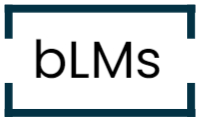BLMS includes features that allow administrators to manage and maintain the overall operation and security of the system.
System Configuration:
This feature allows administrators to customize various aspects of the LMS system, such as the appearance and behaviour of the user interface, and to integrate the LMS with other systems or applications.
LMS Built-In Custom Configurations:
This feature has predefined components meant for corporate companies, universities and colleges, schools, and high schools and all complete LMS features. Each predefined LMS type can likewise be limited by turning on and off the predefined features.
Email Configuration:
This feature allows administrators to load custom templates to be used by the system for emails such as course subscriptions and administrative notifications.
Menu Management:
This feature allows the management of menu items. It allows the association and limiting of menu roles to different user roles.
Role Management:
This feature allows for the management and creation of different role types, role groups and default role management. This section allows administrators to control access to the LMS by granting or limiting access to modules and parts of the system. The role management section can override other role configurations such as the ones granted by the LMS type or editing of menus.
Event Management:
This feature allows an administrator to define the communication protocol of the LMS and includes emails, SMS, and system notifications. It defines the user groups to receive the notifications and enables administrators to manage the messages. Notifications can be turned on and off or made mandatory.
Module Management:
This feature allows for the management of modules that are used in the role management area. Module names and icons can be customized using this feature.
